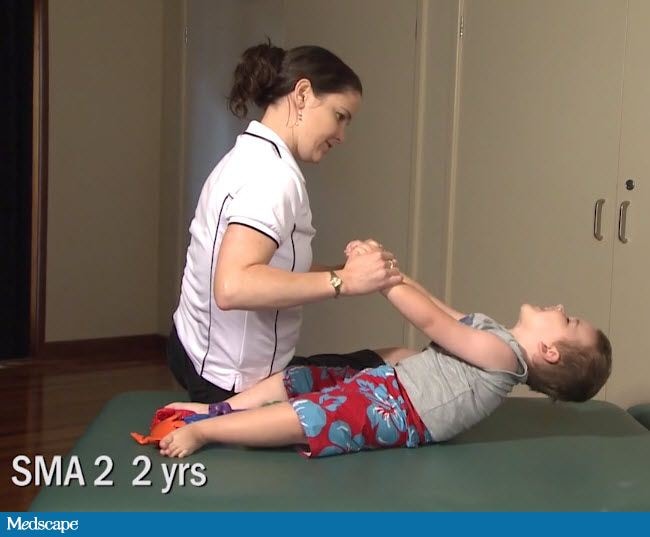How to Evaluate Muscle Weakness in Infants and Children
Neuromuscular diseases, such as muscular dystrophy, are individually rare. Yet, pediatric clinicians frequently encounter children with motor delay, and an approach to identify serious causes of such delays is needed. The average age at diagnosis of Duchenne muscular dystrophy is approximately 5 years, although parents recognize the earliest symptoms when their child is a mean 2.5 years of age.[1] This diagnostic delay has not improved in 2 decades, and such a delay hinders access to information about care options, relevant clinical trials, and support networks for the child's disorder. Delays in diagnosis also impede access to early intervention and other healthcare services. On the other hand, early diagnosis facilitates the family's access to genetic counseling to learn about family planning options. Family stress can be significant when an accurate diagnosis of a serious neuromuscular disorder is delayed. Families typically see several clinicians and the child undergoes unnecessary testing before the child is referred to a specialist familiar with neuromuscular disorders.
The Centers for Disease Control and Prevention (CDC), in collaboration with the National Task Force for Early Identification of Childhood Neuromuscular Disorders, has developed a new Web-based diagnostic tool, the Surveillance and Referral Aid for Primary Care Providers to assist providers in primary care, rehabilitation medicine, and physical and occupational therapy in the evaluation of children with motor delay, including identification of early signs and symptoms of neuromuscular disorders.
The Website of the National Task Force for Early Identification of Childhood Neuromuscular Disorders, ChildMuscleWeakness.org, focuses on evaluation of children 6 months to 5 years of age. Neuromuscular diseases that might present in this age range include (but are not limited to) spinal muscular atrophy types 2 and 3, congenital muscular dystrophies, limb-girdle muscular dystrophy, Charcot-Marie-Tooth disease, some presentations of myotonic muscular dystrophy, Duchenne and Becker muscular dystrophy, and metabolic muscle diseases.

Figure. A child with spinal muscular atrophy type 2, at 2 years of age.
ChildMuscleWeakness.org provides guidance on motor surveillance and screening that expands on the Bright Futures guidelines developed by the American Academy of Pediatrics. The surveillance guidance includes an aid to the assessment of motor development milestones, "signs of weakness by age," including recommendations for evaluating the following milestones:
- Infant+: head lag on pull to sit;
- Age 6+ months: achieving and maintaining sitting; and
- Age 12+ months: rising to stand from the floor and gait (walking and running)
If a delay is found using the surveillance aid, an accompanying motor delay algorithm provides guidance on testing and referral. Clinical pearls outline red flags that indicate the need for an urgent referral to a neurologist:
- Tongue fasciculations;
- Loss of motor milestones; or
- Creatine phosphokinase (CK) level > 3 times normal (however, children with some neuromuscular disorders have normal CK levels).
Many neuromuscular conditions increase the risk for malignant hyperthermia with anesthesia use, and anticipated surgery should increase the urgency of a diagnostic evaluation. The core tools found on ChildMuscleWeakness.org have been endorsed by the American Academy of Pediatrics.
ChildMuscleWeakness.org is designed for clinicians and includes many resources and tools, such as an extensive library of videos showing examples of early and later signs of muscle weakness compared with normal motor development. Information is presented on how to differentiate between muscle weakness caused by diseases of the brain (central causes, such as cerebral palsy) and neuromuscular diseases (peripheral causes, such as Duchenne muscular dystrophy). Other resources include guidance on communicating about motor concerns with families, case studies, teaching tools, and a summary of terms parents use to describe motor delays and weakness. The site highlights the importance of CK testing when motor delay is identified and the cause of the delay is not clear.
The contents of the ChildMuscleWeakness.org Website are the sole responsibility of the National Task Force for Early Identification of Childhood Neuromuscular Disorders and do not necessarily represent the official views of the Centers for Disease Control and Prevention. ChildMuscleWeakness.org was developed under CDC cooperative agreement #DD08-805.
Web Resource
Mark Swanson, MD, MPH, is Senior Medical Adviser to the Division of Human Development and Disability of the National Center on Birth Defects and Developmental Disabilities, Centers for Disease Control and Prevention.
A graduate of Princeton University, the University of Colorado School of Medicine, and the University of North Carolina School of Public Health, Dr. Swanson has been board-certified in Pediatrics and Developmental-Behavioral Pediatrics during his 35-year career. He has extensive experience in program development, clinical services, research, and training in community and university settings. He was the first Director of Partners for Inclusive Communities at Arkansas' University Center on Disabilities and oversaw its growth from 1990 to 2005 before joining the Centers for Disease Control and Prevention in the Division of Human Development and Disability (DHDD). For 3 years, he has directed a multifaceted program that includes state-level health promotion programs for persons with disabilities, extramural research projects, the National Spina Bifida Program, information resource centers addressing physical activity, intellectual disability, paralysis and limb loss, and an intramural research program focusing on health disparities in persons with disabilities. Swanson currently serves as Senior Medical Adviser in DHDD, which has additional programs in ADHD, Tourette syndrome, muscular dystrophy, fragile X syndrome, and hearing loss. He has a career-long commitment to full inclusion and participation of persons with disabilities in all aspects of life.
References
- Ciafaloni E, Fox DJ, Pandya S, at al. Delayed diagnosis in Duchenne muscular dystrophy: data from the Muscular Dystrophy Surveillance, Tracking, and Research Network (MD STARnet). J Pediatr. 2009;155:380-385. Abstract
Δεν υπάρχουν σχόλια:
Δημοσίευση σχολίου